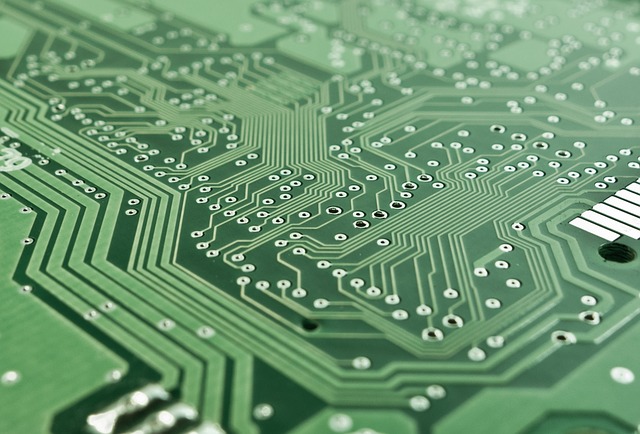Prototyping and simulations have formed an essential portion of electronics industries for many years now. Before going ahead with the fabrication of dedicated hardware the creator will want to ensure it is working the way it should. In previous years while most electronic companies offer hardware that is dedicated in the products that they sell, it has not been a possibility for end users to find a way to reconfigure the hardware to match up to their specific needs. These needs resulted in a market segment for customer configurable Field Programmable integrated circuits which go by the name of FPGAs or Field Programmable Gate Arrays.
Programming Technologies
The FPGAs are considered as type of building bricks that allow for desired customization associated with hardware. These include specialized forms of PLDs that feature higher densities along with an increase in capabilities to implement functionality over a far shorter time frame using CAD. The FPGAs come in a number of varieties which will be based on the type of programming technology utilized. They can be programmed when using:
- Antifuse Technology
These can only be programmed once, The devices that are manufactured by the company known as QuickLogic are the examples of these types. The configuration is achieved by burning a fuse set. These then act as the replacement for ASIC (Application Specific ICs) and then used in the places where the protection associated with intellectual property is extremely important.
- Flash Technology
The programming that is flash-technology based such as the devices from Actel, offers a way for the FPGA to be reprogrammed thousands of times, taking only a few minutes in the field for reprogramming. It is also backed by a non-volatile memory.
- SRAM Technology
These FPGAs, which is the latest dominating technology offers unlimited reprogramming along with extremely fast configurations along with partial reconfiguration in the operations itself along with minimal additional circuitry. Companies such as Xilinx, Atmel, Actel and Altera manufacture these devices.
About The Configurable Logic Blocks
Regardless of all the different type of manufacturers and the slight differences in feature sets and architecture, the majority of the FPGAs have a generic approach that is common. The primary component blocks for any of the FPGAs is the flexible programmable CLB (Configurable Logic Block), that is surrounded by a programmable Input /Output Blocks, that features hierarchies of routing channels that interconnect the different blocks on these boards. In addition, they may be made up of Clock DLLS dedicated to clock distribution or control for the Dedicated Block RAM memories.
The basic building blocks of the Configurable Logic Block is known as the logic cell. The logic cells may feature a carry logic, storage element and input-function generator. The function generator is implemented as a Look Up Table depended on the actual input. An example of this can include the Xilinx Spartan II which features Four inputs LUT. Each of the LUTs are able to offer 16X1 bit Synchronous RAM that is further multiplexed with the use of multiplexers. The LUT is also used in the form of a Shift register that performs the function of capturing burst-mode data. Storage elements in the logic cell are used for level-sensitive latches or edge-sensitive flip-flops. Arithmetic logic includes the XOR gate for a full-adder operation and dedicated carry-logic lines.
About I/O Block And Routing Matrix
- The Input/ Output Block
These blocks feature outputs and inputs that support a range of interfaces and signaling standards. The buffers inside the output and input paths route output and input signals to an internal logic along with the output pads via a flip-flop or directly. These buffers can conform to a number of supported-signaling standards.
About The Routing Matrix
In all the assembly lines in most cases the segment that is the slowest is what will set the production rate overall. In a similar way the route which takes the delay that is the longest will determine the overall performance of an electronic system. For this reason, routing algorithms were implemented to achieve the design of more efficient paths that deliver optimal performance. Routing is on many levels like flip-flops, between LUTs, Local and General Routing Matrix. The General-Purpose Routing occurs between the different CLBs, and I/O Routing between the CLBs and I/O Blocks.
About Clock Distribution
Low skew, high-speed clock distribution is featured in most of the FPGAs, that use Primary Global Routing resources. With every clock-input buffer, there will be a digital Delay-Locked Loop that eliminates skew between the internal clock-input pins and the clock input-pad in the way of adjusting delay elements. It also implements control over multiple clock-domains.
The FPGA families also now offer large-block RAM structures that complement the distributed RAM LUTs, sizes that vary for the various FPGA devices.
Overall designs of FPGA mostly follows the same approaches as the VLSI systems with he main steps being Design Entry, followed by Behavioral Simulation, then Synthesis, followed by Post Synthesis Simulation, translation, routing and mapping and additional analysis such as Static Timing Analysis and Timing simulation. On computers the designs appear all orders as well as tiled, yet an imperfect placement along with routing can happen which can result in performance drops.
The Importance Of FPGA
FPGA offers the promise of still functioning and delivering even in the harshest of conditions. Cyclone devices on offer through Altera function well in the temperature ranges from -40 degrees to 85 degrees. One of the other factors which promote long-term use of their long-term availability.
The FPGAs available at Directics.com used in the microprocessor systems such as the PowerPC405 embedded cores, in the I/O Processing such as Digitally Controlled Impedance, in Digital Signal Processing as the embedded multipliers. It is advisable to make sure of the performance and the design in the way of testing the design on an FPGA before going ahead with ASIC circuits. The FPGAs which are classified as parallel processing-devices have found use in the applications such as brute-force attacks used for breaking the cryptographic algorithms, FFT computations and in convolution.




